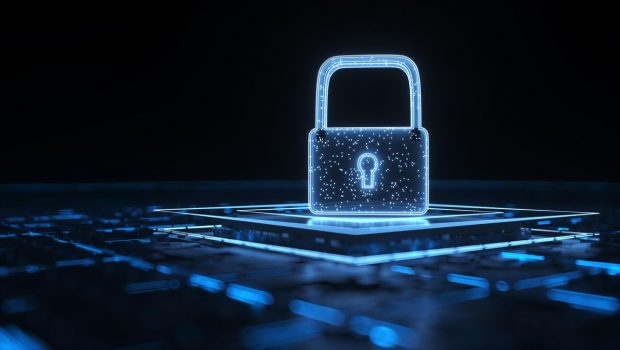How to Make Cybersecurity an Organizational Priority
Isaac Kohen, Vice President of R & D Terramind, Employee monitoring, internal threat detection, and data loss prevention solution provider.
Getty
The costs and consequences of data breaches and cybersecurity incidents are more serious than ever. According to the FBI’s recently released Internet Crime Report 2020, cybercrime $ 4 billion Last year’s losses are still low estimates that contain the incredible value lost by threat actors. Costs can be catastrophic for small businesses.As me Report, 60% of SMEs are closed after a data breach, emphasizing the critical ultimate nature of cybersecurity.
Fortunately, business leaders are beginning to notice it.Recent Research A survey of executive cybersecurity trends found that nearly 20% of CEOs consider cybersecurity risk to be the most prominent threat facing organizations over the next three years. Similarly 75% Business leaders consider cybersecurity a top priority to recover from the recent pandemic.
However, there is a big difference between recognizing a problem and taking action to fix it. Few companies take cybersecurity seriously when it comes to implementing the right defenses.Ah report According to the National Cyber Security Center (NCSC) in the United Kingdom, many board offices cannot actively prioritize cybersecurity until a cybersecurity incident occurs. “Cybersecurity is still not taken as seriously as it needs to be, and is simply not part of the UK board’s thinking,” said agency CEO Lindy Cameron. This is true for companies around the world.
Where should SMBs invest their time and money to most effectively address this dangerous cybersecurity environment in such an environment? For many organizations, the next step is to identify risks. Includes the pursuit of workflows and solutions that protect data and evolve with new threats.
1. Identify
The threat situation today is vast and terrifying. However, dubious attackers from remote parts of the world are targeting businesses with phishing scams, ransomware, and other cyberattacks that threaten operational continuity, data privacy, and financial viability, but most Significant and controllable risks are much closer.
Ah Company employee Employee negligence and human error play a key role in many data breaches and cybersecurity incidents, making them a significant cybersecurity threat. Employees often unknowingly assist malicious outside actors who have a serious impact on a company’s defenses. Including::
• • Malware delivery. 94% of malware is sent via email.
• • Network access. Eighty percent of reported security incidents began with successful phishing scams.
• • Preparing for cyber security. 60% of data breaches exploited vulnerabilities in existing patches.
On the other hand, accidental data transfers, poor password management, and other employee-level factors make enterprises more vulnerable to cybersecurity incidents. Therefore, IT leaders need insights into the organization’s digital ecosystem to identify potential risks and develop appropriate solutions.
In short, data and insight-based identification and detection strategies are the first step in understanding controllable threat situations and preventing cybersecurity incidents.
2. Protect
Of course, companies don’t just want to identify risks. They want to prevent related threats and protect their IT infrastructure. To achieve this, boards, executives, and cybersecurity teams need to focus on the strongest risks, from internal threats to database misconfigurations, and strengthen their defenses to respond to the moment. There is.
This should start by addressing internal vulnerabilities. With so many data breaches caused by employees, companies can protect their data by strengthening education and monitoring protocols.
For example, employee monitoring using user behavioral analytics can help businesses identify employees who are vulnerable to phishing scams and direct leaders to educate and train to mitigate risk. Become. (Full Disclosure: Employee monitoring is one of the key rules of my company.Similarly, cybersecurity software that restricts access, movement, and manipulation of data ensures that the data is only available when it is needed, reducing the chance of negligence or accidents that compromise data security.
In particular, busy teams can leverage the power of automation to streamline these defenses, automatically identify potential risks, and take steps to reduce their potential in real time.
3. Evolve
Continuous data protection and cybersecurity require constant attention and vigilance. As threat patterns continue to evolve, enterprises need to update their defense efforts accordingly. For example More than half Legal and compliance leaders have recently identified third-party vendors as a significant new cybersecurity threat during a pandemic. In response, companies can incorporate third-party vendors into their cybersecurity strategies to address new threats before they become an imminent problem.
To be successful, leaders need to assess ongoing internal behavior and new external trends to develop dynamic best practices to keep their data safe.
Encouragement to conclude
It’s clear that companies often don’t invest enough in cybersecurity until it’s too late. Fortunately, recognizing and responding to this priority does not necessarily mean significantly increasing your company’s cybersecurity budget or implementing thorough monitoring procedures.
Rather, by focusing internally on practical and achievable changes, companies can significantly improve their defenses and enable them to operate their businesses with confidence in difficult digital environments.








Gloss